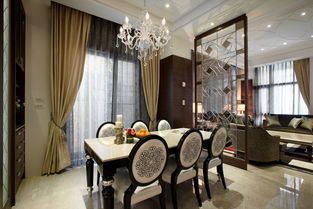```html
The New Classical Style, often referred to as neoclassicism, is a design movement that draws inspiration from classical architecture and art. It emerged in the late 20th century as a response to the excesses of modernism, aiming to reintroduce order, symmetry, and tradition into contemporary design. Let's delve deeper into this timeless aesthetic:
New Classical Style finds its roots in the classical architecture of ancient Greece and Rome. Architects like Andrea Palladio and Christopher Wren were instrumental in reviving classical forms during the Renaissance. However, the modern interpretation of this style gained momentum in the late 20th century with architects such as Robert Adam, Leon Krier, and Quinlan Terry leading the way.
1. Symmetry and Proportion: Central to the New Classical Style is the emphasis on symmetry and proportion. Buildings are often designed with balanced facades and harmonious proportions, reflecting the classical ideals of beauty and balance.
2. Classical Orders: New Classical buildings frequently incorporate classical orders such as Doric, Ionic, and Corinthian columns. These orders lend a sense of hierarchy and elegance to the architectural composition.
3. Traditional Materials: The use of traditional materials such as stone, brick, and marble is characteristic of New Classical architecture. These materials not only evoke a sense of timelessness but also ensure durability and longevity.

4. Decorative Elements: Ornamentation plays a significant role in New Classical design, albeit in a restrained manner. Details such as pediments, pilasters, and moldings are used to add richness and depth to facades without overwhelming the overall composition.
The New Classical Style finds application in various architectural typologies, including:
1. Residential Architecture: Many luxury residences and estates embrace the elegance and refinement of New Classical design. These homes often feature grand entrances, symmetrical layouts, and meticulously crafted detailing.
2. Public Buildings: Government buildings, museums, and cultural institutions often adopt the New Classical Style to convey a sense of permanence, authority, and cultural heritage.
3. Urban Planning: New Classical principles can inform urban planning strategies, promoting walkable streets, humanscale development, and the creation of cohesive, timeless cityscapes.
While rooted in tradition, the New Classical Style continues to evolve with contemporary sensibilities. Architects are experimenting with innovative technologies and sustainable practices while staying true to the principles of classical design. Additionally, the revival of interest in craft and artisanal techniques has led to a renewed appreciation for the handcrafted elements synonymous with this style.
1. Study Classical Precedents: Familiarize yourself with the principles of classical architecture by studying historical precedents and influential architects. Understanding the fundamentals will provide a solid foundation for creating authentic New Classical designs.
2. Balance Tradition with Innovation: While honoring tradition, don't be afraid to innovate and experiment with contemporary materials and technologies. Strive to achieve a harmonious balance between the timeless elegance of classical design and the demands of modern living.
3. Attention to Detail: Pay meticulous attention to detail, from proportions and scale to materials and craftsmanship. It's the careful execution of these details that elevates a design from ordinary to extraordinary.
4. Contextual Sensitivity: Consider the cultural, historical, and environmental context of your project site. A successful New Classical design should resonate with its surroundings and contribute positively to the built environment.
5. Collaborate with Specialists: Collaborate with skilled craftsmen, artisans, and consultants who specialize in classical architecture and traditional building techniques. Their expertise will enrich your project and ensure its authenticity.
In conclusion, the New Classical Style offers a timeless aesthetic that celebrates the enduring principles of classical design while embracing the aspirations of contemporary living. By understanding its origins, key elements, and applications, architects and designers can create spaces that resonate with beauty, harmony, and sophistication.